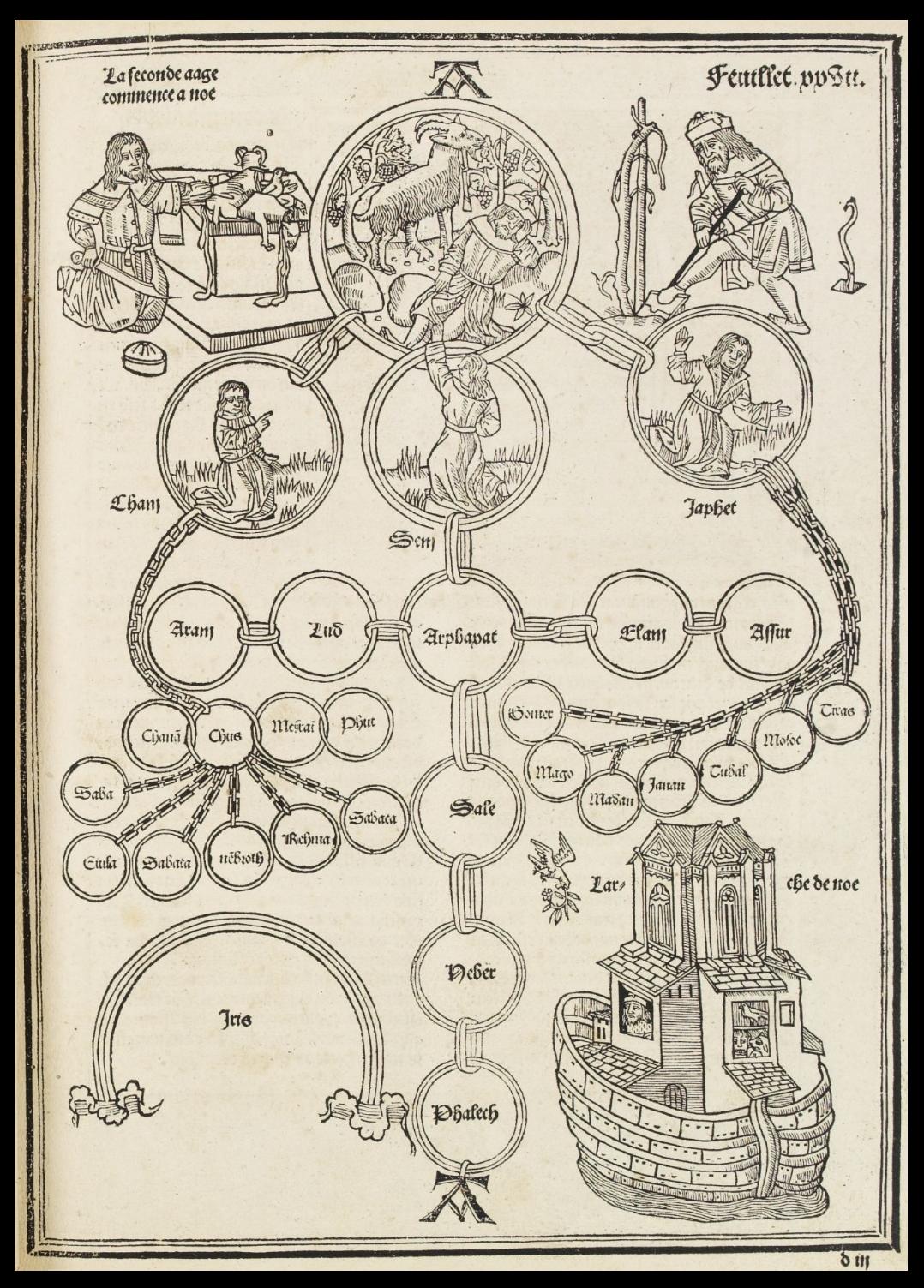
Sebastian Munster, Europe as a Queen, Basel 1570
what we learn from the middle ages, from the world:
the body teaches us about enclosure: the blood is enclosed by the body.
the blood defines the individual. and the blood defines the collective. and the blood is proof of existence. and the blood must be kept enclosed.
bleeding endangers the integral. consanguinity. there is no introduction for bad blood: the other, outsider cannot wave hello. the skin is a fence for blood. the nation is a fence for blood.

Consanguinity Chart
from the Etymologies by Isidore of Seville
Prüfening, Germany; ca. 1160–65
Bayerische Staatsbibliothek, Munich, Clm. 13031
"Girls of fortune, we, and this is the first time, here in Brighton, that we call ourselves fortunate, perhaps because we're talking about our past, know that we come from a long and glorious lineage. Of death. For one of the meanings of the word lineage is 'dead.'"
--Kathy Acker, Pussy, King of the Pirates

The genealogical tree of Noah from 'Rudimentum Novitiorum' (Handbook for Beginners), Lübeck, 1475
"Lineage and blood relate... to every ordering by kinds, where every stranger,every strange thing, marks the absence of neutrality [...] We institute our hierarchies of blood in a forgetting that pretends to neutrality without responsibility. [..] Kinds in lineage and blood come forth in ambiguous profusion, overlaying, overlapping, intermingling beyond any system of classification."
--Stephen David Ross,The Gift of Kinds: the Good in Abundance: an Ethic of the Earth
"..All margins are dangerous. If they are pulled this way or that the shape of fundamental experience is altered. Any structure of ideas is vulnerable at the margins. We should expect the orifices of the body to symbolize its especially vulnerable points.
--Mary Douglas, Purity and Danger: an Analysis of Concept of Pollution and Taboo
also: Bodies, Buildings, and Boundaries:
Metaphors of Liminality in Old English and Old Norse Literature


No comments:
Post a Comment